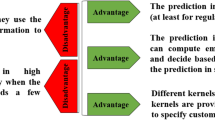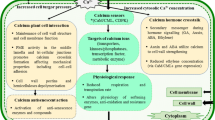Abstract
Biological preservatives containing live microorganisms are environmentally friendly and non-toxic substances used to preserve the quality of fresh fruits. This study investigated whether a composite biological preservative containing live Lactobacillus plantarum (designated as DN003) could preserve the quality of postharvest litchi fruits at high temperature and in humid environment. Postharvest litchi fruits were briefly soaked in DN003, then dried and stored at 29–33°C with 95–98% relative humidity; prochloraz treatment was included as positive control and non-treatment as negative control. In comparison with negative control group, litchi fruits in both DN003-treated and positive control groups better retained their appearance with lower polyphenol oxidase and peroxidase activities and showed higher concentrations of vitamin C, titratable acids, and total sugar content. These data demonstrated that the new composite biological preservative containing L. plantarum is promising to be used in the preservation of postharvest litchi fruit, particularly in high-temperature and humid environment.
Similar content being viewed by others
References
Huang HB. Advances in fruit physiology of the arillate fruits of litchi and longan. Annu. Rev. Hortic. 1: 107–120 (1995)
Jiang YM, Yao LH, Lichter A, Li JR. Postharvest biology and technology of litchi fruit. J. Food Agric. Environ. 2: 76–81 (2003)
Deirdre MH, Elizabeth JM. Postharvest physiology and handling of litchi (Litchi chinensis Sonn.). Postharvest Biol. Tec. 9: 265–281 (1996)
Lee HS, Wicker L. Anthocyanin pigments in the skin of lychee fruit. J. Food Sci. 56: 235–244 (1991)
Zhang DL, Peter CQ. Effects of chitosan coating on enzymatic browning and decay during postharvest storage of litchi (Litchi chinensis Sonn.) fruit. Postharvest Biol. Tec. 2: 195–202 (1997)
Underhill SJR, Critchley C. Physiological, biochemical and anatomical changes in lychee (Litchi chinensis Sonn.) pericarp during storage. J. Hortic. Sci. 68: 327–333 (1993)
Jiang YM, Fu JR. Inhibition of polyphenol oxidase and the browning control of litchi fruit by glutathione and citric acid. Food Chem. 62: 49–52 (1998)
Jiang YM, Duan XW, Joyce D, Zhang ZQ, Li JR. Advances in understanding of enzymatic browning in harvested litchi fruit. Food Chem. 88: 443–446 (2004)
Tian P, Li BQ, Xu Y. Effects of O2 and CO2 concentrations on physiology and quality of litchi fruit in storage. Food Chem. 91: 659–663 (2005)
Sivakumar D, Korsten L. Evaluation of the integrated application of two types of modified atmosphere packaging and hot water treatments on the quality and retention of the litchi cultivar McLean’s Red. J. Hortic. Sci. Biotech. 81: 639–644 (2006)
Zheng XL, Tian SP. Effect of oxalic acid on control of postharvest browning of litchi fruit. Food Chem. 96: 519–523 (2006)
Sun DQ, Liang GB, Xie JH. Improved preservation effects of litchi fruit by combining chitosan coating with ascorbic acid treatment during postharvest storage. Afr. J. Biotechnol. 9: 3272–3279 (2010)
Gustavo MC, Clara PZ, Laura J, Keiko S. Postharvest litchi (Litchi chinensis Sonn.) quality preservation by Lactobacillus plantarum. Postharvest. Biol. Tec. 59: 172–178 (2011)
Jiang YM, Zhu XR, Li YB. Postharvest control of litchi fruit rot by Bacillus subtilis. LWT-Food Sci Technol. 34: 430–436 (2001)
Nybom SM, Collado MC, Surono IS, Salminen SJ, Meriluoto JA. Effect of glucose in removal of microcystin-LR by viable commercial probiotic strains and strains isolated from dadih fermented milk. J. Agr. Food Chem. 56: 3714–3720 (2008)
Ghouri YA, Richards DM, Rahimi EF, Krill JT, Jelinek KA, DuPont AW. Systematic review of randomized controlled trials of probiotics, prebiotics, and synbiotics in inflammatory bowel disease. Clin. Exp. Gastroenterol. 7: 473–487 (2014)
Bested AC, Logan AC, Selhub EM. Intestinal microbiota, probiotics and mental health: From Metchnikoff to modern advances: Part II-contemporary contextual research. Gut pathog. 5, 3 (2013)
Shiozawa M, Akaike M, Yamada R, Godai T, Yamamoto N, Saito H, Sugimasa Y, Takemiya S, Rino Y, Imada T. Clinicopathological features of skip metastasis in colorectal cancer. Hepato-gastroenterol. 54: 81–84 (2007)
Wilson AR, Sigee D, Epton HA. Anti-bacterial activity of Lactobacillus plantarum strain SK1 against Listeria monocytogenes is due to lactic acid production. J. Appl. Microbiol. 99: 1516–1522 (2005)
Hirao LA, Grishina I, Bourry O, Hu WK, Somrit M, Sankaran-Walters S, Gaulke CA, Fenton AN, Li JA, Crawford RW, Chuang F, Tarara R, Marco ML, Baumler AJ, Cheng H, Dandekar S. Early mucosal sensing of SIV infection by paneth cells induces IL-1beta production and initiates gut epithelial disruption. PLoS Pathog. 10: e1004311 (2014)
Jiang YM. Role of anthocyanins, polyphenol oxidase and phenols in lychee pericarp browning. J. Sci. Food Agr. 80: 305–310 (2000)
Pang XQ, Zhang SQ, Duan XW, Ji ZL. Influence of pH and temperature on the stability of anthocyanin from litchi pericarp. Acta Hortic. Sinica 28: 23–27 (2001)
Chen YZ, Wang YR. A study on peroxidase in litchie pericarp. Acta Bot. Austro Sinica 5: 47–52 (1989)
Ning ZX. Food composition analysis handbook. China Light Industry Press, Beijing, China. pp. 308–310 (1998)
Zauberman GR, Akerman M, Weksler A, Rot I, Fuchs Y. Postharvest rentention of the red colour of litchi fruit pericarp. Sci Hortic-Amsterdam 47: 89–97 (1991)
Underhill SC. Anthocyanin decolorisation and its role in lychee pericarp browning. Aust. J. Exp. Agr. 34: 115–122 (1994)
Holcroft DM, ME. Postharvest physiology of litchi: A review. Postharvest Biol. Tec. 9: 265–281 (1996)
Zhang ZQ, Pang XQ, Duan XW, Ji ZL, Jiang YM. Role of peroxidase in anthocyanin degradation in litchi fruit pericarp. Food Chem. 90: 47–52 (2005)
Ma K, Xu C, Zhang CY, Huang YW, Luo HJ, Luo S, Hu WF. Screening and identification of a lactic acid bacteria strain with lychee fresh-keeping function. Mod. Food Sci. Tech. (China) 5: 111–117 (2014)
Author information
Authors and Affiliations
Corresponding author
Rights and permissions
About this article
Cite this article
Xu, C., Hu, Wf., Luo, S. et al. Effect of composite biological preservative containing Lactobacillus plantarum on postharvest litchi quality. Food Sci Biotechnol 25, 1639–1643 (2016). https://doi.org/10.1007/s10068-016-0252-y
Received:
Revised:
Accepted:
Published:
Issue Date:
DOI: https://doi.org/10.1007/s10068-016-0252-y




